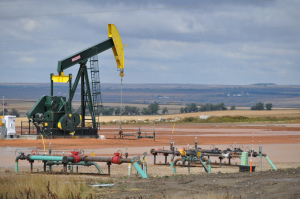By Peter Ward January 22, 2016
Trump Laid Bare in the Washington Post
The Washington Post published an in-depth investigative article Monday by Robert O’Harrow Jr. about Donald Trump’s shaky financing of his Atlantic City casinos in the ‘80s and ‘90s.
In 1987, Trump spent months maneuvering to take control of the Taj Mahal Casino in Atlantic City, promising gambling regulators that he could make the Taj succeed, and finance the project without using junk bonds, according to the Post. Trump claimed banks would lend him money for the Taj at prime rates, and even dismissed junk bonds as “what really made the companies junk”.
When he was turned down by the banks, Trump turned to junk bonds after all, and agreed to pay 14% interest to raise $675 million for the project. Six months after the Taj opened, it defaulted on interest payments to bondholders.
Trump has since been asked several times about the incident during his campaign for the Republican Party presidential nomination. The Washington Post reviewed hundreds of pages of legal, regulatory and financial records relating to his role in the downfall of the Taj, concluding that Trump downplayed his own responsibility for the Taj’s demise, and that he took extreme risks in a shaky economy.
O’Harrow Jr.’s article is packed full of research that directly contradicts Trump’s assertion that he was ultimately successful on the Taj deal, despite the fact that the company filed for bankruptcy. O’Harrow spoke to Trump himself, whom he quotes in the story. Trump warned O’Harrow Jr.: “If you write this one, I’m suing you.”
Trump also defended his use of junk bonds, saying he had “the prerogative” to change his mind over using them. “I didn’t want to have any personal liability, so I used junk bonds. I accept the blame for that, but I would do it again,” he said.
The article points out that Trump’s decision to over-leverage the Taj and his other casinos in Atlantic City hurt a number of businesses. Although it was mainly large institutions that bore the brunt of his failure to pay back loans, many small outfits and small lenders were only paid a fraction of what they were due. The story closes with The Donald’s business assessment of the deal: “It’s not personal. This was just business,” he tells O’Harrow. “I got out great.”
What Just Happened to Oil? An Explainer:

Oil Boom in North Dakota © David
How low are oil prices really, in historical terms?
This week U.S. oil prices fell below $27 for the first time since 2003. New York light crude tumbled 5.5% to $26.89 a barrel on Wednesday, as Brent crude, the global benchmark, fell 4.2% to $27.56. Oil has now fallen more than 25% so far this year, the steepest decline since the financial crisis.
Oil prices have been falling since 2014, when they hovered around the $100 mark. Oil had crept up to those levels due to rising demand from surging economies such as China, and conflicts in oil-producing nations such as Iraq and Libya, which put the squeeze on supply.
What made oil prices fall?
In short, supply is outstripping demand. When oil was priced at more than $100 a barrel, it made sense for oil companies to spend a little more money getting to the oil which is harder to extract. Now, it doesn’t.
Because of this, the U.S. and Canada started drilling shale formations in places like North Dakota, Texas and Alberta’s oil sands, starting a shale boom in North America. Production levels in the U.S. and Canada increased dramatically.
But in late 2014, economic struggles in Europe, Asia and the U.S. led to a decline in demand. At the same time, Iraq and Libya began producing and exporting oil again after civil war and unrest. As demand decreased and supply increased, oil prices began to plummet, and have yet to recover.
OPEC’s Role
OPEC, or the Organization of the Petroleum Exporting Countries, is an intergovernmental organization of 13 oil-rich nations, led by Saudi Arabia. The organization’s main goal is to coordinate petroleum policies to ensure the stabilization of oil markets.
It was widely expected in 2014 that OPEC would agree to decrease the oil production of its members, a move which would have stabilized prices. But Saudi Arabia saw an opportunity to put pressure on the U.S. shale boom, believing it could outlast shale producers at low prices and increase its market share. U.S. shale companies cut costs where they could and so far have lasted longer than expected, although there are fears they may not survive much longer.
OPEC has kept production levels constant, continuing to pump oil out of the ground despite a lack of demand.
When will prices recover?
There are not currently any forces that will alleviate the oil slump in the forseeable future. Iran, free of international sanctions, is about to add its own oil to the markets, jacking up supply even more. China’s economy continues to struggle badly, and demand is not expected to pick up there or in Europe soon. Some banks have predicted that oil will reach $20 this year.
Who suffers?
Oil-dependent countries such as Russia and Saudi Arabia have been forced to rethink their government budgets in response to the price drop. U.S. oil companies have seen profits slashed dramatically, and the banks that financed shale drilling have been hit hard. Venezuela, one of the world’s largest oil exporters, is on the brink of recession and low oil prices are not helping.
500 Company Boards of Directors, Visualized

Mark Zuckerberg, CEO and founder of Facebook ©JD Lasica
Ever wondered who really runs corporate America’s biggest companies? Shining some light on the figures around the boardroom table, The Wall Street Journal published a data visualization piece on Tuesday that explores the makeup of the boards of all 500 companies in the S&P 500.
The piece shows how each of the boards compare in terms of board pay, number of women, independence, age and tenure.
A scrolling graphic shows that only about 20% of directors in S&P 500 companies are women, but the number on each company board varies wildly. Women make up half or more of boards in just three of the companies, while 11 companies had boards made up of only men. Each company board is represented by a dot, which when clicked upon yields a further breakdown of the board’s members.
The next metric measured is independence, which measures how many of a company’s board members can be considered truly separate from the management. Just three boards contain only independent directors, and just under half of the S&P 500 have board chairmen who are also CEOs of the companies.
How old are board members? Only two companies have boards with an average age under 49.5 years: Facebook and Tripadvisor. Facebook’s average is brought down by the youngest board member in the entire list, Mark Zuckerberg, also the CEO and founder, who is 31 years old.
The final data point covered by the graphic is pay. The media pay for board members at Regeneron Pharmaceuticals stood at around $1.76 million, making it the best paid board in the S&P 500. On the other end of the spectrum, two or more of the board members were unpaid at two companies: Amazon and HCA Holdings.
TOP TEN: THE WEEK’s BIGGEST HEADLINE BIZ NEWS
Dow Falls 400 Points as Global Rout Deepens Amid Plunge in Crude (by Jeremy Heron, Dani Burger, Bloomberg)
Shell Profit Tumbles Amid Oil Price Slump (by Sarah Kent, The Wall Street Journal)
Goldman posts smallest profit in four years after bond settlement (by Richa Naidu and Sudarshan Varadhan, Reuters)
Microsoft plans to donate $1B in cloud services to nonprofits (by Matt Day, Seattle Times)
China Reports Slowest Economic Growth In 25 Years (by Bill Chappell, NPR)
Netflix share prices soar as company reaches nearly 75m subscriptions (by Sam Thielman, The Guardian)
VW Admits Cheating in the U.S., but Not in Europe (by Danny Hakim, The New York Times)
Barclays to axe 1,200 investment bank jobs worldwide (by Julia Kollewe, The Guardian)
Markets overreacting, says Nasdaq boss (by Emily Young, BBC)
European Central Bank Says It’s Not Yet Ready for New Stimulus (by Jack Ewing, The New York Times)
This entry was posted on Friday, January 22nd, 2016 at 4:18 pm. It is filed under Week in Review. You can follow any responses to this entry through the RSS 2.0 feed.
Comments are closed.
